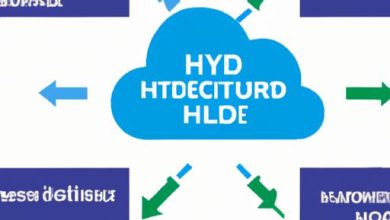Multi Cloud vs Hybrid Cloud- 10 key comparisons of differences and similarities

Both the Multi Cloud vs Hybrid Cloud models are about integrating multiple clouds, but they differ in many ways.
Today, the cloud ecosystem includes infrastructure, compliance, security, and more. Multi-cloud system includes many cloud services from different providers, which can be public or private. In contrast, a Hybrid Cloud system is a cloud deployment model that combines different types of clouds, unlike a Multi-cloud system. But what is the difference between Multi Cloud vs Hybrid Cloud? This article breaks down and discusses in more depth the similarities and differences between Multi Cloud vs Hybrid Cloud.
Contents
What is Multi Cloud vs Hybrid Cloud storage system?
Multi Cloud vs Hybrid Cloud is a cloud deployment model that integrates more than one cloud. A typical Multi-cloud infrastructure integrates different clouds of the same type, while a Hybrid Cloud combines two or more clouds of different types.
According to Flexera’s State of the Cloud 2021 Report, approximately 92% of organizations use a Multi-cloud strategy, of which 82% have a hybrid cloud strategy in place. To understand the difference between Multi Cloud vs Hybrid Cloud storage, consider a simple analogy, where a Hybrid Cloud combines two fruits, bananas, and grapes. Meanwhile, multiple clouds can simply combine different types of bananas. As a result, the cloud infrastructure underlying these cloud models is fundamentally different.
1. Multi-cloud storage system
In a Multi-cloud system, a business cooperates with several providers that provide multiple cloud services of the same type. Businesses benefit from this model because it has the following advantages:
- Allows the company to use the best services for each application or task
- Reduce the risk of being locked out with one provider
- Ensure that cloud teams depend on the right cloud solution
- Enables better business planning by choosing the most affordable services
Today, Multi-cloud setups have the active participation of public cloud service providers such as Amazon Web Services (AWS), Google Cloud Platform (GCP), Microsoft (Azure), IBM, and others. other offers. Here, each cloud in the setup manages a specific workload. This implies that the associated infrastructure lacks integration of workloads of any kind.
2. The hybrid Cloud storage system
In a Hybrid Cloud environment, an enterprise combines a public cloud with a private cloud or on-premises data center. A common example of a hybrid cloud strategy is to run application code on an internal environment, and the cloud explodes into a public cloud system during high-traffic times to better manage IT needs. Peak.
Hybrid Cloud systems require sophisticated coordination between different cloud platforms. This is not observed in multi-cloud environments. The goal is to develop a unified space where separate systems interact, communicate and manage the same IT system.
Multi Cloud vs Hybrid Cloud: 10 key comparisons of differences and similarities
1. Key Similarities Between Multi Cloud vs Hybrid Cloud
While there are significant differences between Multi Cloud vs Hybrid Cloud deployments, they also exhibit subtle similarities. Here are the key similarities between the two cloud implementations.
- Store sensitive data
Multi Cloud vs Hybrid Cloud both run on infrastructure that combines different types of clouds, i.e. on-premises, private or public clouds. Therefore, in both cases, storing sensitive data is subject to business requirements and infrastructure design. This implies that, in both Multi-cloud and hybrid scenarios, critical data can reside in an on-premises installation, in the cloud (private or public), or on an internal server.
- Infrastructure Security
Security in both Multi Cloud vs Hybrid Cloud environments is highly dependent on the underlying architecture of the system. As more than one public cloud is involved in both scenarios, the security protocols of all providers need to be considered to ensure active infrastructure security.
Since cloud providers are in both cases responsible for protecting the infrastructure from external threats and attacks, you need to partner with trusted providers. Also, let’s say you have finer control over various security parameters such as system configuration, data encryption, custom access control, endpoint security, and others. In that case it can add to your combat arsenal regardless of the deployed architecture i.e.
- Data management according to specific regulations
In situations where both Multi Cloud vs Hybrid Cloud setups do not include a private cloud, a company must consider that public cloud storages are compliant with regulations and standard protocols such as PCI, HIPAA, or GDPR. This is because a public cloud provider typically has more cybersecurity resources than an independent company with a private cloud.
Therefore, data processing companies with high regulatory standards should choose reliable public cloud providers that offer repositories located in legally relevant geographies. This allows both Multi-cloud and hybrid cloud environments to store regulatory-specific data in a more controlled, secure, and isolated environment.
- Emphasis on regulatory compliance
As regulatory-specific data becomes an integral part of the cloud computing world, both Multi Cloud vs Hybrid Cloud setups are collaborating with regulatory, law-compliant cloud providers’ specifications, guidelines, and specifications required for their business processes. This practice is followed by companies deploying both Multi-cloud and Hybrid Cloud to ensure that they are safe from any legal penalties incurred as a result of regulatory compliance violations.
- Complex cloud migration
Moving data (or applications) to the cloud is a complex task because it requires using up resources. In a Multi-cloud setup, data must be migrated to multiple clouds. This moving task can be time-consuming and challenging for a novice team. Similarly, in a hybrid cloud setup, migrating data to different providers’ public clouds requires more time, resources, and skillful teams. Therefore, in both Multi Cloud vs Hybrid Cloud setups, cloud migration is quite complicated.
2. The difference between Multi Cloud vs Hybrid Cloud
In a Hybrid Cloud, one can explore cloud-based architecture without having to abandon existing applications. This implies that you can test new apps in a cloud installation while keeping legacy apps on-premises. Hybrid Clouds scale on demand as they strive to modernize the user experience using the latest in cloud technology like AI and ML.
Multi-cloud, on the other hand, allows you to access multiple clouds and data centers to accomplish different tasks. It allows you to propagate your applications to several cloud environments while avoiding vendor lock-in. Thus, a Multi-cloud installation can be considered as a subset of a Hybrid Cloud, where a Hybrid Cloud can be used as one of its multi-cloud environments.
With Multi-cloud, you get availability and can handle more workloads than with a Hybrid Cloud. Furthermore, it provides better visibility and governance than Hybrid Cloud, especially when managing shadow IT cases, where a specific set of employees work in a different cloud than the cloud. of the enterprise.
Finally, the distributed cloud is known to deliver public cloud services to different physical locations while using a single console to better manage operations and administration. of such services (e.g. GDPR). As a result, you can continue to use the Multi-cloud environment and access resources regardless of their location.
Distributed cloud gives you more consistency than multi-cloud and hybrid cloud because it can efficiently monitor different cloud environments from one core location and perform secure updates in different locations. that cloud easily.
Conclusion:
Multi Cloud vs Hybrid Cloud setups is separate cloud deployment models tailored to specific use cases. Both models allow easy access to cloud platforms and efficiently deliver business services. However, while choosing a cloud deployment model for workloads or migrating data to a new cloud, make sure that you weigh the pros and cons of different cloud strategies.
Therefore, stakeholders and decision-makers must be aware of the differences between Multi Cloud vs Hybrid Cloud strategies before choosing a model that best suits their specific business needs.
Conclusion: So above is the Multi Cloud vs Hybrid Cloud- 10 key comparisons of differences and similarities article. Hopefully with this article you can help you in life, always follow and read our good articles on the website: Cloud.tapchiai.net







